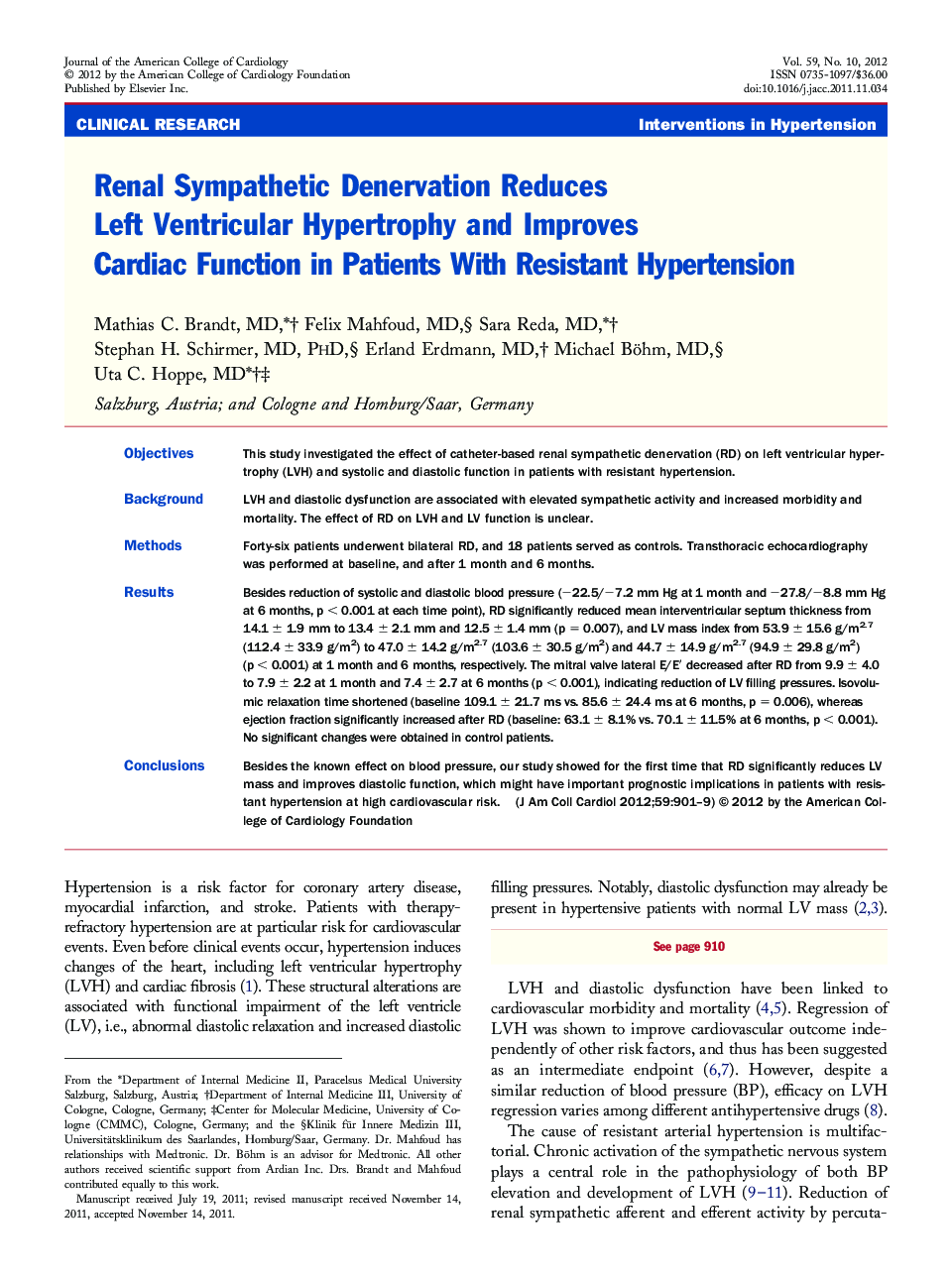| Article ID | Journal | Published Year | Pages | File Type |
|---|---|---|---|---|
| 2947276 | Journal of the American College of Cardiology | 2012 | 9 Pages |
ObjectivesThis study investigated the effect of catheter-based renal sympathetic denervation (RD) on left ventricular hypertrophy (LVH) and systolic and diastolic function in patients with resistant hypertension.BackgroundLVH and diastolic dysfunction are associated with elevated sympathetic activity and increased morbidity and mortality. The effect of RD on LVH and LV function is unclear.MethodsForty-six patients underwent bilateral RD, and 18 patients served as controls. Transthoracic echocardiography was performed at baseline, and after 1 month and 6 months.ResultsBesides reduction of systolic and diastolic blood pressure (−22.5/−7.2 mm Hg at 1 month and −27.8/−8.8 mm Hg at 6 months, p < 0.001 at each time point), RD significantly reduced mean interventricular septum thickness from 14.1 ± 1.9 mm to 13.4 ± 2.1 mm and 12.5 ± 1.4 mm (p = 0.007), and LV mass index from 53.9 ± 15.6 g/m2.7 (112.4 ± 33.9 g/m2) to 47.0 ± 14.2 g/m2.7 (103.6 ± 30.5 g/m2) and 44.7 ± 14.9 g/m2.7 (94.9 ± 29.8 g/m2) (p < 0.001) at 1 month and 6 months, respectively. The mitral valve lateral E/E′ decreased after RD from 9.9 ± 4.0 to 7.9 ± 2.2 at 1 month and 7.4 ± 2.7 at 6 months (p < 0.001), indicating reduction of LV filling pressures. Isovolumic relaxation time shortened (baseline 109.1 ± 21.7 ms vs. 85.6 ± 24.4 ms at 6 months, p = 0.006), whereas ejection fraction significantly increased after RD (baseline: 63.1 ± 8.1% vs. 70.1 ± 11.5% at 6 months, p < 0.001). No significant changes were obtained in control patients.ConclusionsBesides the known effect on blood pressure, our study showed for the first time that RD significantly reduces LV mass and improves diastolic function, which might have important prognostic implications in patients with resistant hypertension at high cardiovascular risk.
